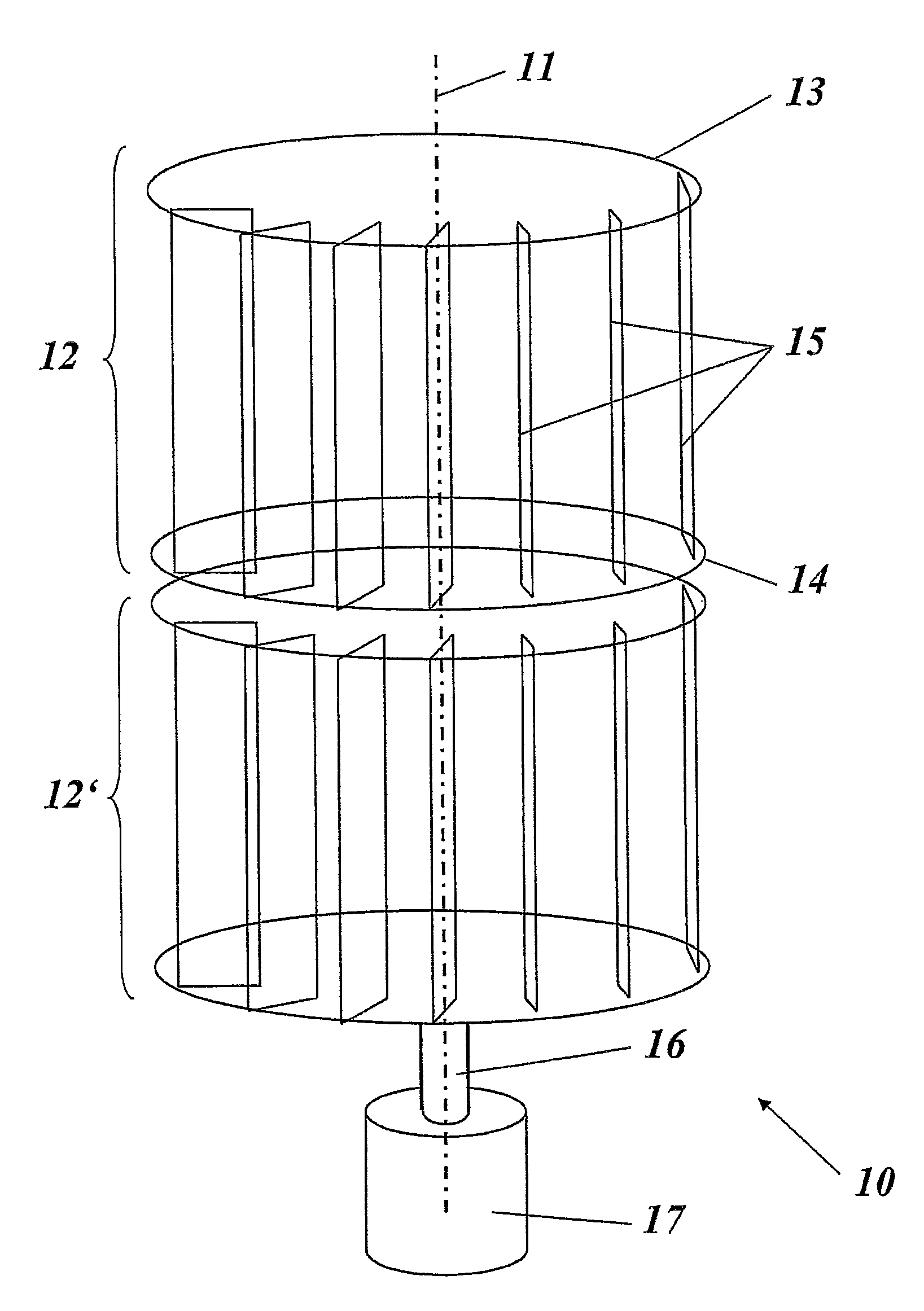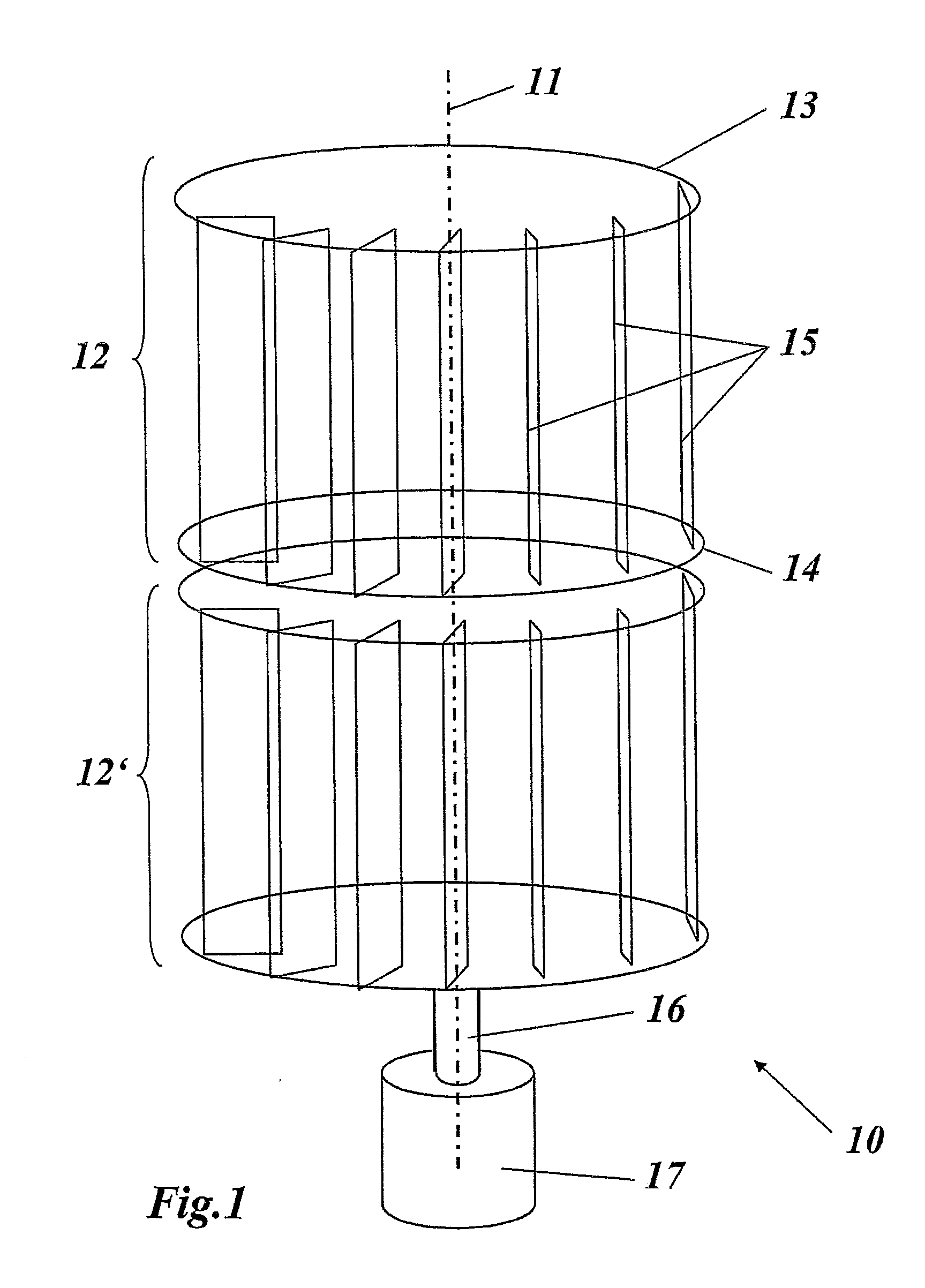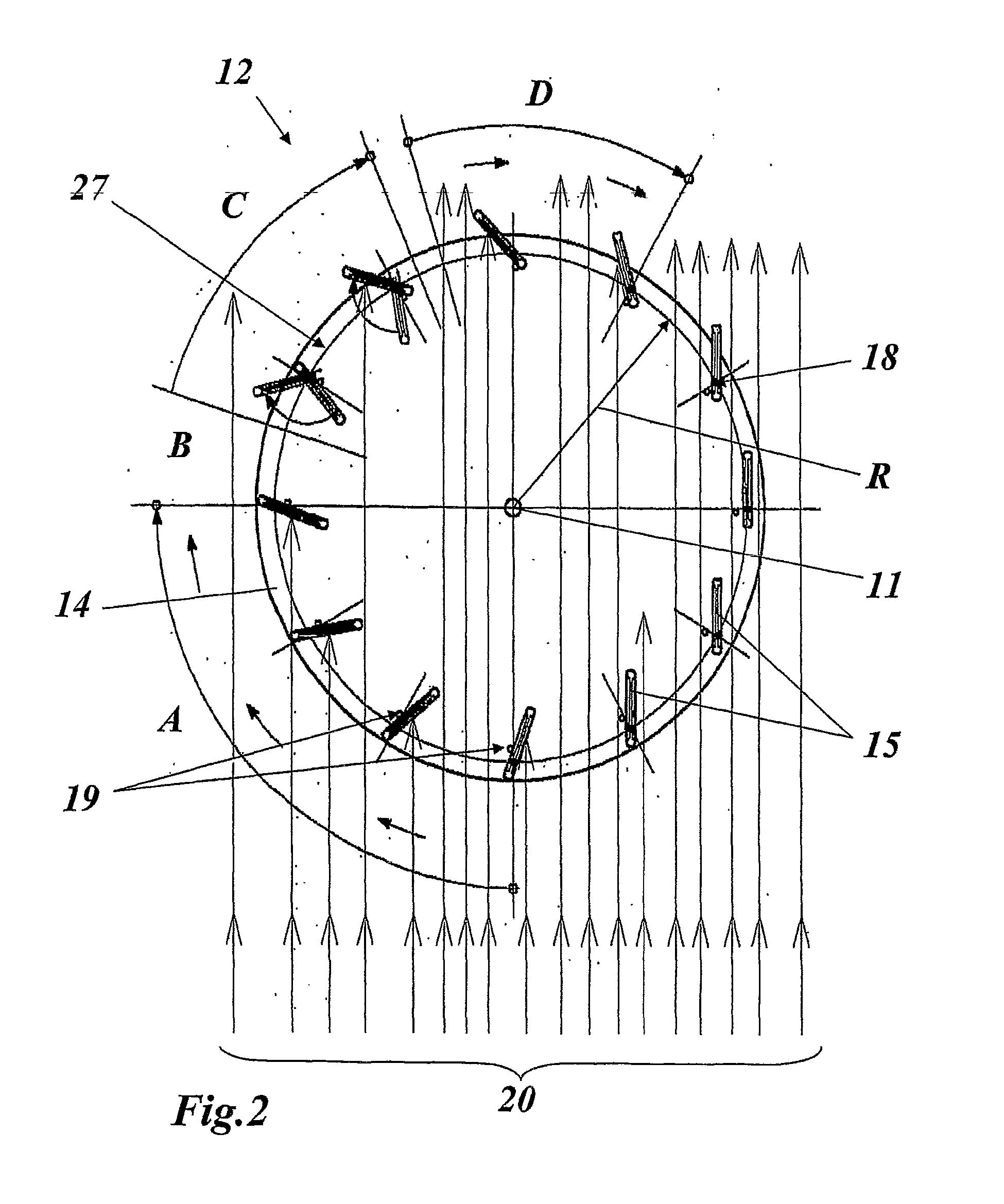Wind Power Plant
a wind power plant and turbine technology, applied in the direction of propellers, propulsive elements, water-acting propulsive elements, etc., can solve the problems of comparatively small number of broad rotor blades used, unoptimized energy obtained, and unoptimized yield
- Summary
- Abstract
- Description
- Claims
- Application Information
AI Technical Summary
Benefits of technology
Problems solved by technology
Method used
Image
Examples
Embodiment Construction
[0007]The object of the invention is therefore to design a wind power installation of the type mentioned initially which avoids the disadvantages of known installations and results in more energy being obtained while at the same time decreasing the mechanical load on the structure. The object is achieved by the totality of the features of claim 1. The essence of the invention is that the width of the rotor blades is chosen to be small, and is less than approximately ⅓ of the radius of the circumferential circle. The narrow rotor blades result in various advantages:[0008]More rotor blades with a comparatively large pivoting range can be arranged on the circumferential circle, which more effectively convert, and therefore utilize, the wind flow passing through the rotor volume to torque.[0009]The load on the individual rotor blades is less, as a result of which they can pivot more easily to the optimum position, and produce reduced disturbance forces during pivoting and when striking ...
PUM
 Login to View More
Login to View More Abstract
Description
Claims
Application Information
 Login to View More
Login to View More - R&D
- Intellectual Property
- Life Sciences
- Materials
- Tech Scout
- Unparalleled Data Quality
- Higher Quality Content
- 60% Fewer Hallucinations
Browse by: Latest US Patents, China's latest patents, Technical Efficacy Thesaurus, Application Domain, Technology Topic, Popular Technical Reports.
© 2025 PatSnap. All rights reserved.Legal|Privacy policy|Modern Slavery Act Transparency Statement|Sitemap|About US| Contact US: help@patsnap.com



